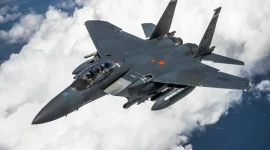- Views: 6K
- Replies: 73

The United Kingdom has renewed its invitation to India to join the ambitious Tempest sixth-generation fighter jet program, aiming to capitalize on India's expertise and potentially reduce development costs. While the UK currently collaborates with Italy and Japan on the project, both countries reportedly see India's participation as crucial to its success.
This renewed push comes after a previous attempt in 2019, with the UK highlighting the potential for India to contribute to software development and other key areas of the program.
In parallel, Rolls-Royce, a leading member of the Tempest development team, has expressed keen interest in collaborating with India on engine technology for the indigenous AMCA fifth-generation fighter program. This move could offer India a customized solution for its domestic fighter jet project.
India's decision remains uncertain, as the country balances its desire for access to cutting-edge technology with its "Make in India" initiative, which prioritizes self-reliance in defence manufacturing. While joining the Tempest program could offer technological advancements, it might limit India's control over intellectual property rights.
The Tempest program aims to develop a next-generation fighter jet with advanced capabilities, including stealth technology, artificial intelligence, and swarming drone capabilities. The target for the first flight is set for 2035.
India's participation could potentially reduce the program's estimated cost of $32.5 billion, a significant factor for all parties involved. The collaboration with Rolls-Royce on engine technology could also prove mutually beneficial, accelerating the development of India's AMCA program.
As India weighs its options, the decision to join the Tempest program or pursue a separate engine collaboration with Rolls-Royce will have significant implications for the country's defence capabilities and its role in the global aerospace industry.


